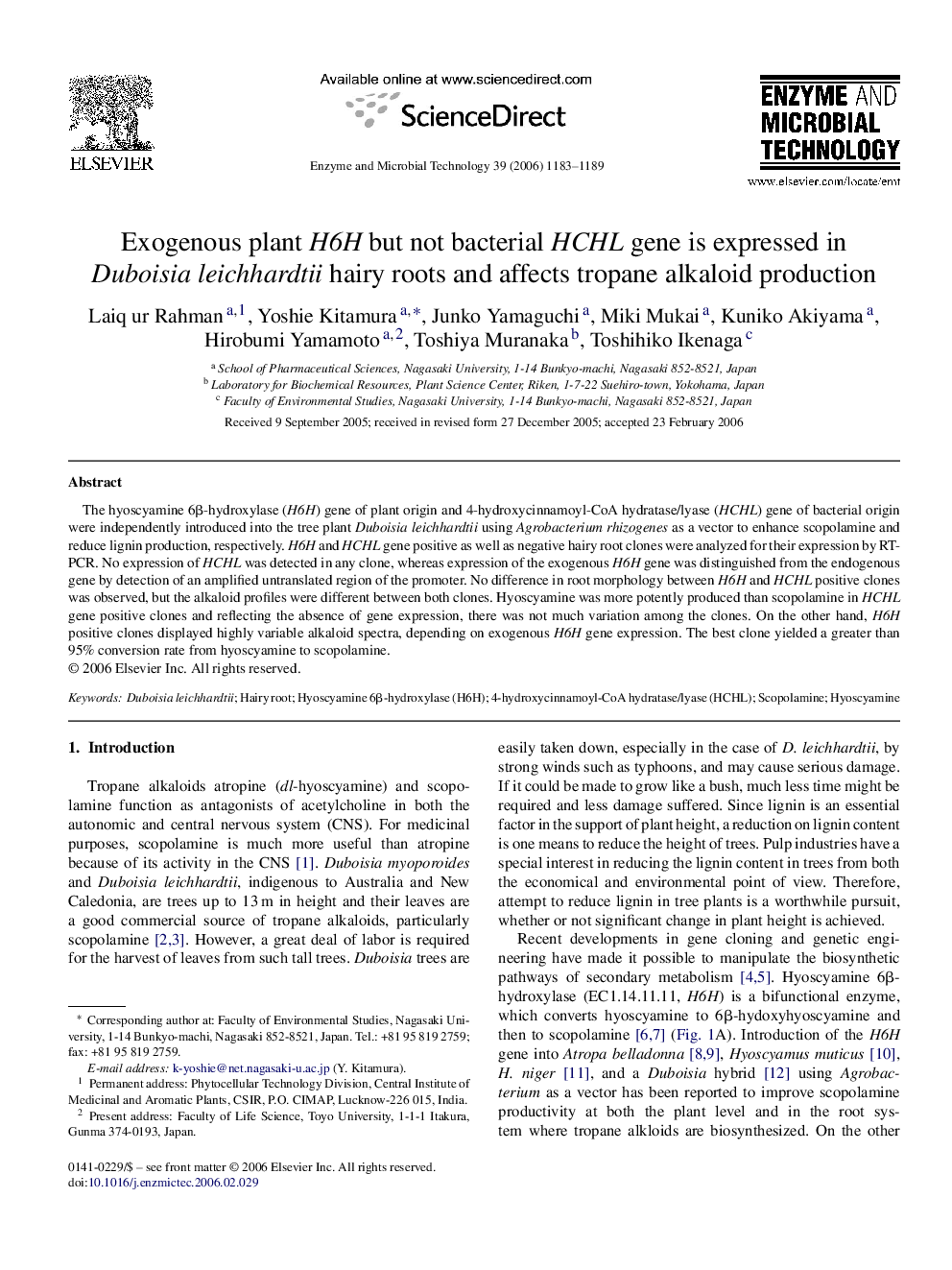| Article ID | Journal | Published Year | Pages | File Type |
|---|---|---|---|---|
| 18336 | Enzyme and Microbial Technology | 2006 | 7 Pages |
The hyoscyamine 6β-hydroxylase (H6H) gene of plant origin and 4-hydroxycinnamoyl-CoA hydratase/lyase (HCHL) gene of bacterial origin were independently introduced into the tree plant Duboisia leichhardtii using Agrobacterium rhizogenes as a vector to enhance scopolamine and reduce lignin production, respectively. H6H and HCHL gene positive as well as negative hairy root clones were analyzed for their expression by RT-PCR. No expression of HCHL was detected in any clone, whereas expression of the exogenous H6H gene was distinguished from the endogenous gene by detection of an amplified untranslated region of the promoter. No difference in root morphology between H6H and HCHL positive clones was observed, but the alkaloid profiles were different between both clones. Hyoscyamine was more potently produced than scopolamine in HCHL gene positive clones and reflecting the absence of gene expression, there was not much variation among the clones. On the other hand, H6H positive clones displayed highly variable alkaloid spectra, depending on exogenous H6H gene expression. The best clone yielded a greater than 95% conversion rate from hyoscyamine to scopolamine.
